-
 Bitcoin
Bitcoin $112400
-1.07% -
 Ethereum
Ethereum $3409
-3.27% -
 XRP
XRP $2.784
-6.60% -
 Tether USDt
Tether USDt $0.9997
-0.03% -
 BNB
BNB $739.3
-2.09% -
 Solana
Solana $158.0
-2.90% -
 USDC
USDC $0.9998
-0.02% -
 TRON
TRON $0.3213
-0.94% -
 Dogecoin
Dogecoin $0.1929
-5.01% -
 Cardano
Cardano $0.6974
-2.82% -
 Hyperliquid
Hyperliquid $36.69
-2.31% -
 Sui
Sui $3.327
-4.80% -
 Stellar
Stellar $0.3672
-5.18% -
 Chainlink
Chainlink $15.65
-3.07% -
 Bitcoin Cash
Bitcoin Cash $525.0
-1.68% -
 Hedera
Hedera $0.2291
-6.00% -
 Avalanche
Avalanche $20.91
-2.96% -
 Ethena USDe
Ethena USDe $1.000
0.00% -
 Toncoin
Toncoin $3.520
-1.12% -
 UNUS SED LEO
UNUS SED LEO $8.968
0.14% -
 Litecoin
Litecoin $105.7
0.26% -
 Shiba Inu
Shiba Inu $0.00001181
-1.79% -
 Polkadot
Polkadot $3.492
-2.08% -
 Uniswap
Uniswap $8.800
-3.10% -
 Dai
Dai $0.9999
-0.01% -
 Monero
Monero $289.9
-3.17% -
 Bitget Token
Bitget Token $4.243
-1.27% -
 Pepe
Pepe $0.00001006
-3.67% -
 Cronos
Cronos $0.1248
-5.68% -
 Aave
Aave $249.7
-2.50%
How are the block rewards for mining distributed?
Block rewards incentivize miners to secure blockchain networks, with distribution varying by consensus mechanism like PoW or PoS, impacting inflation and security.
Mar 27, 2025 at 08:21 pm
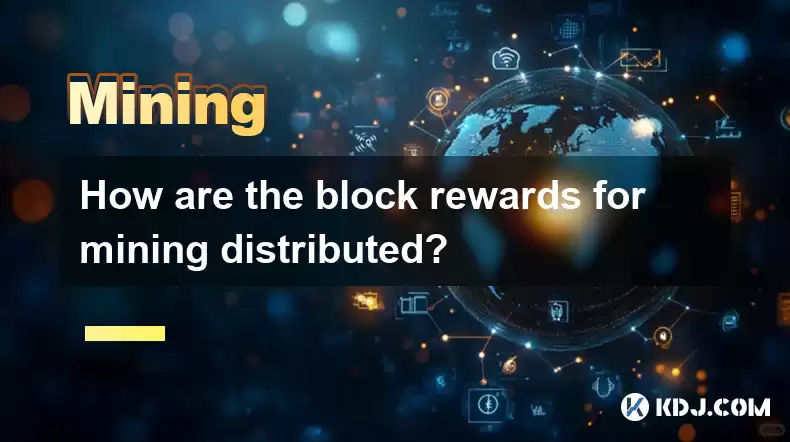
Understanding Block Rewards in Cryptocurrency Mining
Block rewards are the cryptocurrency payments given to miners for successfully adding a new block of verified transactions to the blockchain. This reward incentivizes miners to secure the network and maintain its integrity. The distribution mechanism varies depending on the specific cryptocurrency and its consensus mechanism (Proof-of-Work or Proof-of-Stake, primarily). Let's explore how this distribution happens in detail.
Proof-of-Work (PoW) Block Reward Distribution
In Proof-of-Work systems, like Bitcoin, miners compete to solve complex cryptographic puzzles. The first miner to solve the puzzle gets to add the next block to the blockchain and receives the block reward. This reward is typically a fixed amount of cryptocurrency, initially defined in the cryptocurrency's whitepaper, although it can be subject to halving events, reducing the reward over time.
- The Competition: Many miners simultaneously work on solving the puzzle. The computational power they contribute determines their probability of success. More powerful mining hardware increases the chances of winning the block reward.
- The Reward: Once a miner solves the puzzle, their solution is broadcast to the network. If the solution is valid, the miner adds the block and receives the reward. This is automatically transferred to their designated cryptocurrency wallet.
- Transaction Fees: In addition to the block reward, miners also receive transaction fees included within the block. These fees are paid by users to prioritize their transactions and are added to the miner's reward. The higher the transaction fees, the greater the incentive for miners to include those transactions in their block.
Proof-of-Stake (PoS) Block Reward Distribution
Proof-of-Stake systems operate differently. Instead of competing with computational power, validators are selected based on the amount of cryptocurrency they stake. The more cryptocurrency a validator stakes, the higher their chance of being chosen to validate the next block.
- Staking: Validators lock up a certain amount of their cryptocurrency as collateral. This acts as a security deposit, ensuring they act honestly.
- Block Validation: A random selection algorithm, often incorporating elements of randomness and time, chooses a validator to create and validate the next block.
- Reward Distribution: The selected validator receives the block reward for their work. The reward structure in PoS can be more complex, sometimes including rewards based on factors like the validator's uptime and performance.
Variations in Block Reward Distribution
While the fundamental principles remain the same, specific implementations differ across various cryptocurrencies.
- Halving Events: Many PoW cryptocurrencies, such as Bitcoin, have pre-programmed halving events. These events reduce the block reward by half at predetermined intervals, controlling the rate of new coin creation.
- Inflation Rates: The block reward directly impacts the inflation rate of a cryptocurrency. A higher block reward leads to faster inflation, while a lower reward slows it down.
- Staking Pools: In PoS systems, validators often participate in staking pools to increase their chances of being selected. Rewards earned by the pool are then distributed among its participants proportionally to their staked amount.
- Masternode Rewards: Some cryptocurrencies utilize masternodes, which are always-on servers that contribute to network security. Masternode operators receive block rewards as an incentive for maintaining their nodes.
Mining Pools and Their Role in Distribution
Mining pools are groups of miners who combine their computing power to increase their chances of winning block rewards. When a pool member successfully mines a block, the reward is distributed among the pool members based on their contributed hash rate (in PoW) or staked amount (in PoS), usually according to a pre-defined formula.
- Pool Fees: Mining pools typically charge a fee for their services, a percentage of the block reward. This fee compensates the pool for its infrastructure and management.
- Payout Methods: Pools use various payout methods, such as Pay Per Share (PPS), Proportional (PROP), and others. These methods determine how often and how rewards are distributed to pool members.
Understanding the Impact of Block Rewards
The distribution of block rewards is a crucial aspect of a cryptocurrency's economic model. It influences the security of the network, the inflation rate, and the overall incentives for participation in the system. A well-designed block reward system is essential for the long-term health and sustainability of a cryptocurrency. Changes to block reward mechanisms often have significant effects on the cryptocurrency's price and market dynamics.
Frequently Asked Questions
Q: What happens to the block reward after a halving event?
A: The block reward is reduced by half. This is a pre-programmed event in many PoW cryptocurrencies designed to control inflation.
Q: How are block rewards distributed in a Proof-of-Stake system with staking pools?
A: The reward is initially earned by the validator chosen by the algorithm. Then, the reward is distributed among pool members based on their proportion of staked coins within the pool, minus the pool's fees.
Q: Are transaction fees always included in the block reward?
A: Yes, transaction fees are added to the miner's or validator's block reward. This provides an additional incentive for including transactions in blocks.
Q: What is the significance of block reward distribution in the overall cryptocurrency ecosystem?
A: It's the core incentive mechanism that drives the security and operation of many blockchains. It influences the network's stability, the rate of new coin creation, and participation from miners and validators.
Q: Can a single miner consistently win block rewards?
A: In PoW, while a single miner can win multiple blocks, it's unlikely due to the competitive nature. The probability of winning is directly related to the miner's hash rate compared to the network's total hash rate. In PoS, the probability is based on the staked amount relative to the total staked amount. The randomness of the selection algorithm also plays a significant role.
Disclaimer:info@kdj.com
The information provided is not trading advice. kdj.com does not assume any responsibility for any investments made based on the information provided in this article. Cryptocurrencies are highly volatile and it is highly recommended that you invest with caution after thorough research!
If you believe that the content used on this website infringes your copyright, please contact us immediately (info@kdj.com) and we will delete it promptly.
- Bitcoin Liquidity, Osmosis Zone, and Investor Interest: A Deep Dive
- 2025-08-03 15:16:44
- Web3, Sports, and Computing Power: A New Ballgame
- 2025-08-03 15:16:44
- Ethereum, Altcoin Surge, and the MAGACOIN Presale: What's the Buzz?
- 2025-08-03 15:16:44
- Crypto Whales, Meme Coins, and Moonshots: Navigating the Wild West of 2025
- 2025-08-03 15:16:44
- Hong Kong Stablecoin Licenses: A Tight Squeeze?
- 2025-08-03 15:16:45
- Dogecoin's Bullish Signals: Engulfing Candle and Whale Accumulation Point to Potential Surge
- 2025-08-03 15:16:45
Related knowledge
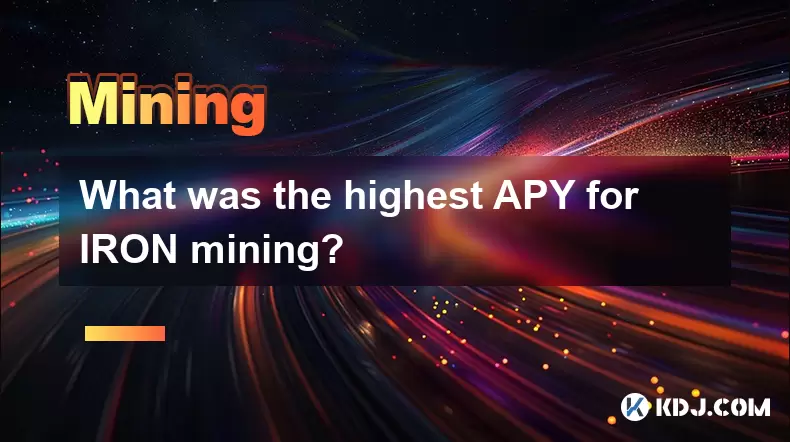
What was the highest APY for IRON mining?
Jul 23,2025 at 05:14am
Understanding IRON Token and Its Mining MechanismThe IRON token is a stablecoin that operates within the Iron Finance ecosystem, primarily on blockcha...

What is impermanent loss in IRON pools?
Jul 23,2025 at 09:00am
Understanding Impermanent Loss in the Context of IRON PoolsImpermanent loss is a phenomenon that affects liquidity providers in decentralized finance ...
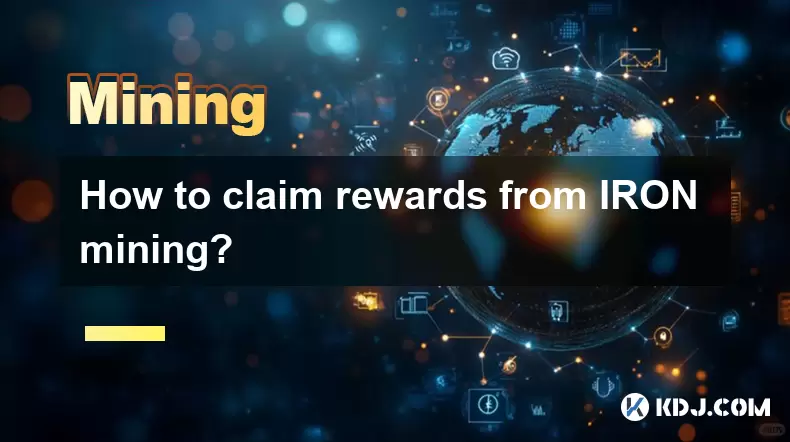
How to claim rewards from IRON mining?
Jul 23,2025 at 02:21pm
Understanding IRON Mining and Reward MechanismsIRON Finance operated as a decentralized finance (DeFi) protocol on the Polygon and Binance Smart Chain...
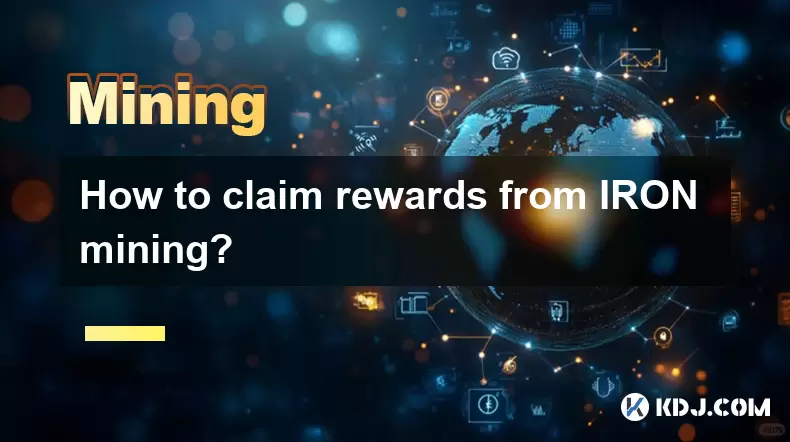
How to claim rewards from IRON mining?
Jul 29,2025 at 05:07am
Understanding IRON Mining and Reward MechanismIRON is a dual-token system designed to stabilize the value of a synthetic asset through a combination o...
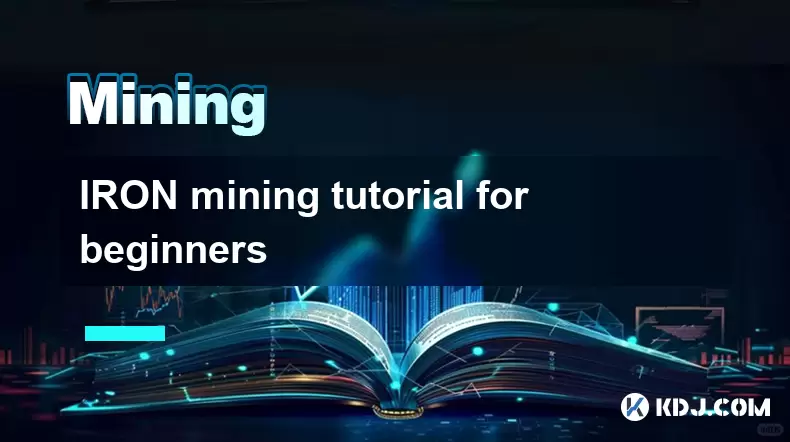
IRON mining tutorial for beginners
Jul 27,2025 at 12:01am
What Is IRON and How Does It Work in the Cryptocurrency Ecosystem?IRON is a cryptocurrency token that operates on the Binance Smart Chain (BSC) and is...
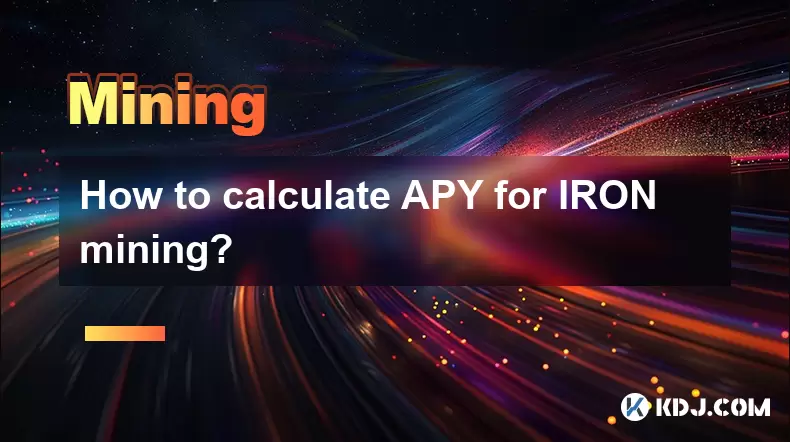
How to calculate APY for IRON mining?
Jul 28,2025 at 09:49am
Understanding APY in the Context of IRON Token MiningWhen engaging in IRON token mining within decentralized finance (DeFi) platforms, Annual Percenta...

What was the highest APY for IRON mining?
Jul 23,2025 at 05:14am
Understanding IRON Token and Its Mining MechanismThe IRON token is a stablecoin that operates within the Iron Finance ecosystem, primarily on blockcha...

What is impermanent loss in IRON pools?
Jul 23,2025 at 09:00am
Understanding Impermanent Loss in the Context of IRON PoolsImpermanent loss is a phenomenon that affects liquidity providers in decentralized finance ...

How to claim rewards from IRON mining?
Jul 23,2025 at 02:21pm
Understanding IRON Mining and Reward MechanismsIRON Finance operated as a decentralized finance (DeFi) protocol on the Polygon and Binance Smart Chain...

How to claim rewards from IRON mining?
Jul 29,2025 at 05:07am
Understanding IRON Mining and Reward MechanismIRON is a dual-token system designed to stabilize the value of a synthetic asset through a combination o...

IRON mining tutorial for beginners
Jul 27,2025 at 12:01am
What Is IRON and How Does It Work in the Cryptocurrency Ecosystem?IRON is a cryptocurrency token that operates on the Binance Smart Chain (BSC) and is...

How to calculate APY for IRON mining?
Jul 28,2025 at 09:49am
Understanding APY in the Context of IRON Token MiningWhen engaging in IRON token mining within decentralized finance (DeFi) platforms, Annual Percenta...
See all articles

























































































